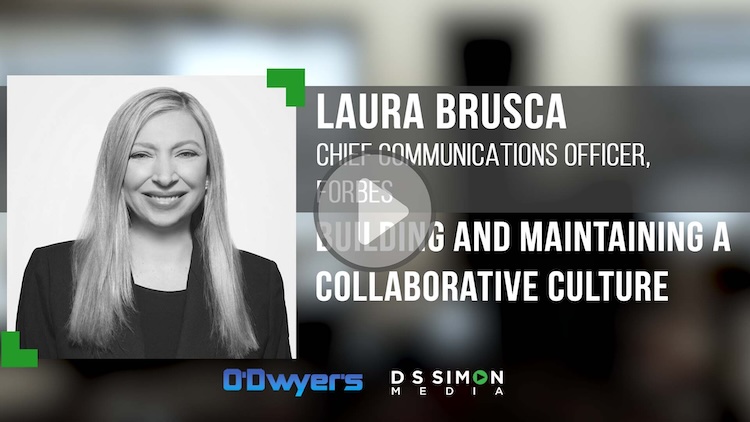 |
| Curtis Sparrer |
Concerns about slowing economic growth are everywhere. Inflation—particularly in the form of rising gas and food prices—is catching the attention of the media and the public. International conflict, ongoing supply chain issues and rising interest rates are making everything cost more. The markets have responded; volatility and lower share prices are blunting the “wealth effect.” In the face of revenue misses and slimmer margins, some businesses are cutting back on capital spending, and many have paused hiring.
And what about marketing during downturns? What should companies do before markets go positive? I believe that in a down economy, companies can and must become bullish on communications—including PR, advertising and social media.
Maintaining Your Reputation: It Matters
Companies build reputations on the success of the products and services that they deliver. Meeting customer needs is key, and the fundamentals that enable success don’t change just because the economy is having a bumpy ride. Day in and day out, great companies will continue to execute—successfully—amidst the turmoil on any given day.
And for marketers, that is a good thing to focus on. Recessions are transitory, and there’s already substantial debate about the possibility for a “soft landing” in 2023 and beyond. When markets are choppy, companies can be understandably reticent to engage in marketing activity, and it is relatively easy to “turn off the spigot” and begin to cut costs in areas like marketing and ad or PR agency spend, as well as headcount growth.
However, executives should think carefully about what can happen if they “go dark.” Disappearing from the radar during uncertain times can negatively impact your company’s reputation with customers and key influencer audiences. Becoming invisible or scaling back creates an impression of weakness and adds to uncertainty about a company and its ability to take care of customers. To borrow an acronym from tech marketing, pulling back only plants FUD—fear, uncertainty and doubt.
Stay the Course and Tell Good Stories
However counterintuitive it might seem, downturns are the time to “stay the course” and tell good stories. Companies should double down on storytelling and brand journalism, as well as outbound PR, marketing and advertising.
Efforts should focus on messages that will resonate during the downturn. Communicate the idea that your firm will help its customers thrive. Conveying a sense of resilience builds confidence and helps ensure that your brand will be there after the downturn has passed.
A downturn is the ideal time to punch above your weight and bolster your firm’s perception as being bigger. This positions your firm to capture market share in a time when other competitors are scared and cutting budgets—and when things look most bleak.
When it comes to telling good stories in a downturn, PR and comms personnel are truly critical. Media outlets are under-resourced these days, and reporters need the services of the PR community to make them aware of—and effectively frame—good stories. In addition to carrying forward messages of resilience, these media relations efforts can help individual journalists build their audience and personal brand, which is helpful in uncertain times.
Great Brands (and Employers) Don’t Go Away Overnight
Proactive storytelling can also have a positive impact on recruiting. For millennials and Gen Z workers, this downturn is the first of their adult lives. As such, they will likely be paying close attention to the brands that have gone missing in the face of adversity and will take this into account when evaluating their job choices—either now or when the economy recovers. Given the strong current demand for knowledge workers, this is not a trivial consideration.
By showing that your brand isn’t going away anytime soon and marketing during a downturn, you can illustrate that your firm represents a stable employment opportunity. This is critical when recruiting the next generation of workers, including those who will track into executive management and leadership positions down the road.
Just as much as “we’re always going to be around” is a key message, integrating a purpose-driven narrative is also useful. That narrative—which should show how your company delivers value, even in tough times—and moving quickly forward with it will help to get a lead on competitors and inserts your company’s larger mission and vision into the dialog. This also applies to recruitment efforts.
Be Poised for the Recovery
The future of most B2B and B2C companies is built around the right messages and letting the markets know that you’re still an innovator. As an example, think of Apple’s 2007 launch of the iPhone, which led right into the 2008-2010 recession—yet people still snapped them up because it was an impactful, useful product that everyone wanted. Ask yourself these questions: What will people buy in any economy, and how can I position my firm to be seen as offering must-have products and solutions?
In a time when discretionary spending is budgeted, marketing can be the difference between winning and losing a sale. And being bullish on communications in a down market means that your company will be poised for the recovery, when—not if—it happens.










 Have a comment? Send it to
Have a comment? Send it to 
No comments have been submitted for this story yet.